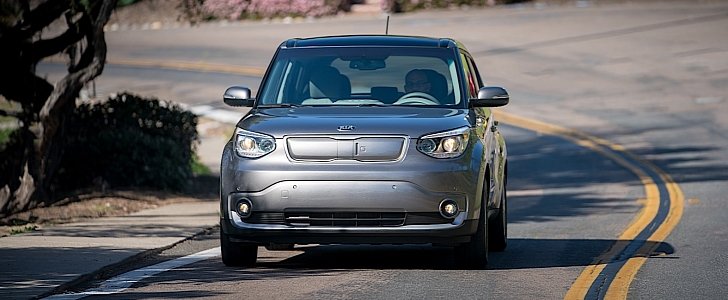Wireless charging for electric vehicles is not a new concept. Carmakers have been toying with the idea ever since the first publicly available EV hit the market back in 2010. Up until now, however, little progress has been made in the field.
Theoretically, wireless charging would allow electric car owners to park their cars in the vicinity of a piece of hardware which, by using an electromagnetic field, would charge the batteries while requiring no wires, cables, or plugs.
Under the radar, the South Koreans from Kia have apparently been working on such a system too, together with wireless technology company Mojo. For the past three years, the two have been testing and tweaking such technologies.
Weirdly enough, Kia has done so without having much planned in terms of an electric lineup. The Koreans even go as far as to say there are no current strategies to offer the wireless charging system on production vehicles.
Perhaps plugs and cables were the only things holding Kia back when it comes to developing a line of EVs. Now that this hurdle seems to be out of the way, maybe we’ll see more than the Soul EV and the Niro EV in the carmaker’s electric roster.
“We’re thrilled with the success of the system and its efficiency,” said William Freels, Hyundai-Kia America Technical Center president.
“We set out to develop wireless charging that has real-world applications and is easy to use for the consumer. Now, with this fleet of wireless Soul EVs, we can clearly see a future of unplugged electric vehicles.”
Unfortunately, Kia fell short on providing additional details about the technology it seems to have innovated. The carmaker only said the tech requires the transfer of an electromagnetic field between two coils, namely a transmitter on the ground and a receiver on the bottom of the vehicle.
The result is a wireless charging system that is capable of transferring more than 10 kW to the car for fast charging while targeting an 85 percent grid-to-vehicle efficiency.
Under the radar, the South Koreans from Kia have apparently been working on such a system too, together with wireless technology company Mojo. For the past three years, the two have been testing and tweaking such technologies.
Weirdly enough, Kia has done so without having much planned in terms of an electric lineup. The Koreans even go as far as to say there are no current strategies to offer the wireless charging system on production vehicles.
Perhaps plugs and cables were the only things holding Kia back when it comes to developing a line of EVs. Now that this hurdle seems to be out of the way, maybe we’ll see more than the Soul EV and the Niro EV in the carmaker’s electric roster.
“We’re thrilled with the success of the system and its efficiency,” said William Freels, Hyundai-Kia America Technical Center president.
“We set out to develop wireless charging that has real-world applications and is easy to use for the consumer. Now, with this fleet of wireless Soul EVs, we can clearly see a future of unplugged electric vehicles.”
Unfortunately, Kia fell short on providing additional details about the technology it seems to have innovated. The carmaker only said the tech requires the transfer of an electromagnetic field between two coils, namely a transmitter on the ground and a receiver on the bottom of the vehicle.
The result is a wireless charging system that is capable of transferring more than 10 kW to the car for fast charging while targeting an 85 percent grid-to-vehicle efficiency.

